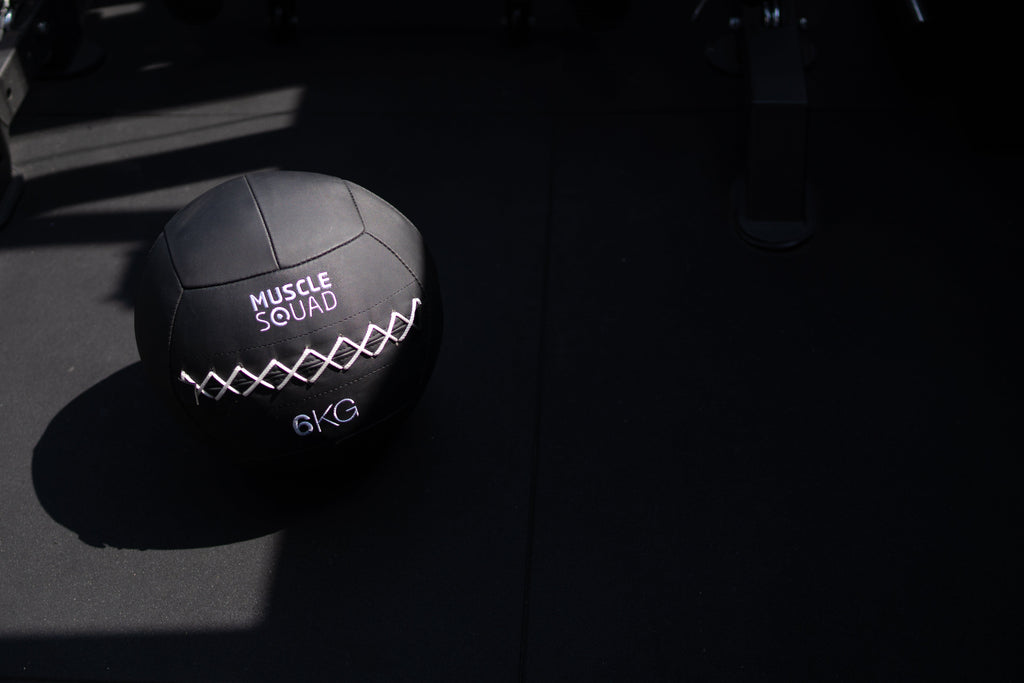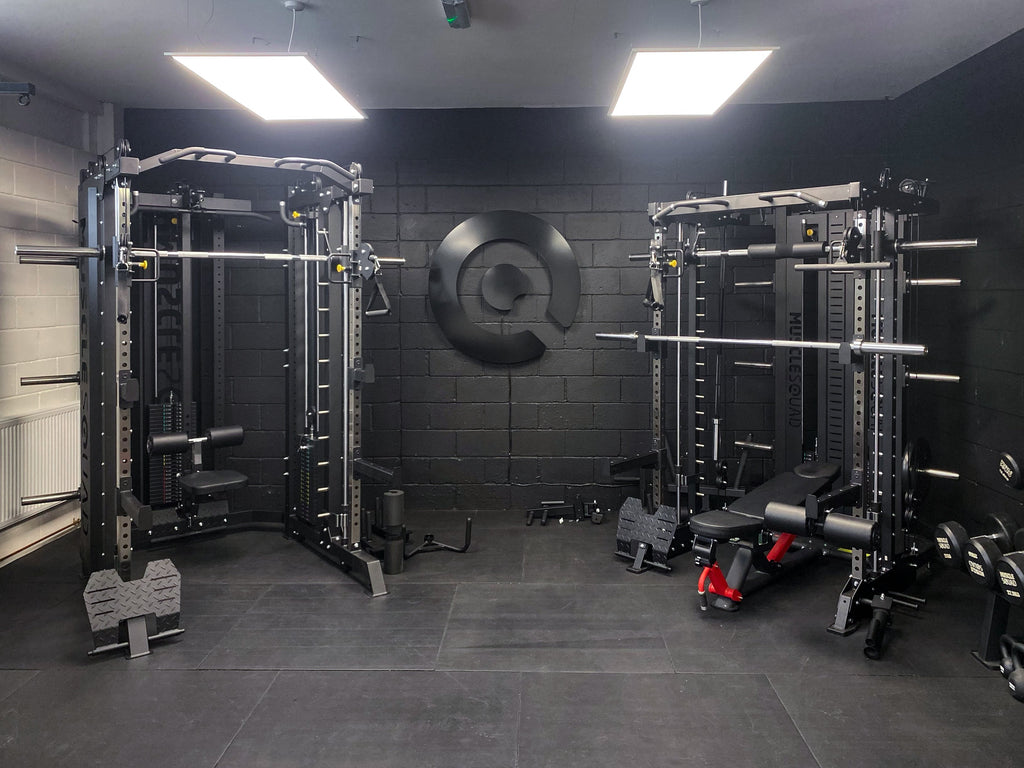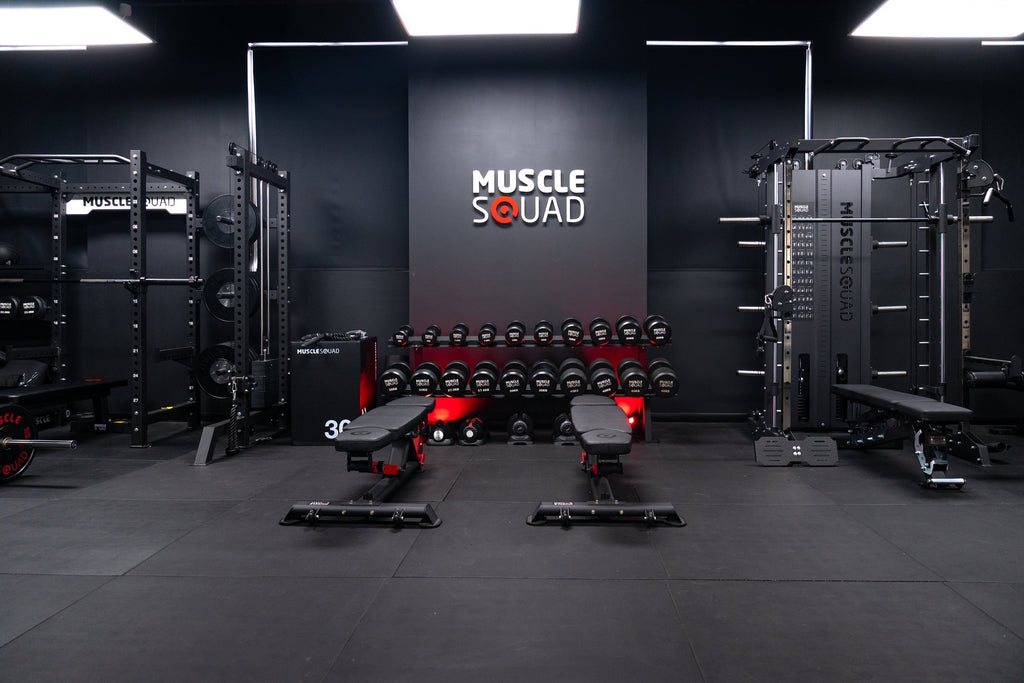Whether you’re purchasing a cable machine for your home setup, a PT studio or a commercial space, it’s important to do the research to find one that suits your goals. There are numerous types of cable machines on the market, each with their own pros and cons to consider. We’re going to walk you through what type of cable machines exist, what they excel at and who they’re suited for.
Standalone machines or all-in-one trainers?

The first question to ask yourself is whether you’re looking for a standalone cable machine or a larger rig that has built-in cables, and the answer to this will usually depend on the space you have available.
If you’re outfitting a home gym and space is at a premium, then bringing your cable machine into the same footprint as your squat rack is a smart move. As the home gym community has grown, more and more all-in-one solutions have entered the market to take the place of a cable machine, a squat rack and—in some cases—even a smith machine. This saves precious floor space in your garage and a hefty chunk of change, too.
Commercial projects and gyms with a lot of floor space, on the other hand, are likely to value the simplicity of a standalone cable machine. If clients will be working out on the equipment, then providing them with something familiar and simple to use makes for a smoother experience. Standalone cable machines often have a sleeker aesthetic too since less emphasis is placed on stacking it with features. Have a think about what you need to get out of your purchase to see which is the right option for you.
Single or dual pulleys?

When you imagine a cable machine, we’ll bet that you picture one with two pulleys. This is your typical setup, but did you know you can get single pulley systems now?
Whether these come standalone or as part of a rack like our Phase 2 series, opting for a single cable pulley is going to make your budget go a lot further. The pros and cons of a single pulley are clear. On the plus side, it’ll save you hundreds of pounds compared to a dual setup. But, you won’t be able to perform cable crossovers or any other dual cable movement, which is a major draw to cable machines for a lot of lifters.
1:1 or 2:1 cable ratio?

If you’ve only trained in commercial gyms, you might not know what a 1:1 and a 2:1 cable machine is. But when you’re purchasing one for yourself, it’s an essential point to consider.
Put simply, a 1:1 cable ratio means you feel all of the weight on the stack at the handle. If you’ve selected 20kg on the stack, you’ll feel 20kg of resistance at the handle. A 2:1 system halves the weight on the stack, so that same 20kgs of weight will translate to 10kg of resistance.
There are a number of benefits to each system which we’ve gone into on a separate post, but the main thing to be aware of is the weight jumps between each plate. A 1:1 machine will feel heavy as you progress through isolation movements like bicep curls, lateral raises and tricep pushdowns. Compare that to a 2:1 machine where you can make smaller jumps and it’s clear that 2:1 is more friendly towards gradual progression.
The drawbacks of a 2:1 machine though is that you might max out the weight stack. A 90kg stack on a 2:1 ratio will give you a max resistance of 45kg, which many intermediate lifters will outgrow in their lat pulldowns and cable rows.
Plate-loaded or pin-loaded?

The final point to consider: do you want your cable machine to operate from a pin-loaded weight stack, or would you rather load it with weight plates?
Plate-loaded machines are generally cheaper but that’s because they don’t come with weights. You’ll need to invest in a separate set of plates which is likely to come out to £300 - £400. Once you’ve made this investment, though, then you also have a full set of plates for barbell exercises which is a nice two-birds-one-stone situation. Plate-loaded machines are typically on a 1:1 ratio, so be sure you have some lighter plates if you go for this option so you can make those smaller jumps.
To get the traditional cable machine setup, look for a pin-loaded machine. These come with a dedicated weight stack that you adjust by locking in with a pin. You’ll have more weight options (for the most part) than a pin-loaded machine and they’re significantly quicker to adjust, making it possible to superset and dropset with ease.
---
So there’s lots to consider when purchasing a cable machine! Do your homework, see if we stock one that you fancy and feel free to reach out to our team if you have any questions.
Happy lifting. 💪

 May 14, 2024 - Cameron Brierley
May 14, 2024 - Cameron Brierley


Leave a comment: